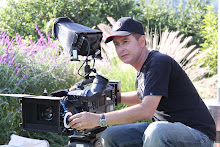
Clean monitoring at full 1920x1080 resolution, suitable for recording to an external recorder
Clean HDMI output at full resolution even during recording, suitable for recording
Professional HD-SDI output
1080/24pSf output
A composite video output jack
SMPTE timecode
LTC timecode synchronizing, for multiple-camera shoots or for using an external audio recorder or timecode slate
A headphone jack for monitoring audio
RCA audio outputs
Professional XLR audio inputs
Line/Mic selectable
Can supply phantom power for microphones
Manual audio level control with no AGC
Option of engaging an automatic limiter to prevent against sudden overmodulation
High-quality audio pre-amps
1080/60i and 1080/50i recording modes
Variable frame rates in 20 steps, from 1080/12p up to 1080/60p, for various levels of slow-motion and fast-motion
720/24p and 720/25p and 720/30p recording modes (in addition to 1080/24p, 1080/25p, 1080/30p, 720/50p, 720/60p, 1080/50i and 1080/60i)
P2/AVCCAM Metadata
Two card slots
Professional image controls
Filmlike Cinegamma gamma curves
Selectable color matrices
Adjustable knee point and master pedestal controls right in camera
Dynamic Range Stretching feature
Color-matched with other Panasonic professional cameras, such as the VariCams
Pre-record, for catching events occurring even before you press the record button
Continuous recording capacity of over 12 hours in economy mode, and continuous recording of six hours in best-quality mode on a single card (no 12-minute time limit!)
Complete freedom from overheating issues
Colored Focus Assist that can be used while recording
Capable of video-camera-like autofocus (when used with an appropriate lens)
Face-detection autofocus that can track focus on a moving face
Peaking/EVF DTL for easier manual focus
High-definition color LCD panel
High-definition color viewfinder
Viewfinder that can actually be used during video recording
Two sets of zebras, which can be set from anywhere from 50 to 105 IRE in 5-IRE steps
A built-in Waveform Monitor(!)
A built-in Vectorscope
A built-in Spotmeter (the "Marker" which tells you the IRE brightness of what's in the center of the screen)
Different aspect ratio markings in the LCD, including 16:9, 4:3, 14:9, 1.85:1 and 2.35:1
A 90% "safety zone" for making sure your framing will be visible on all TVs
Film-style variable shutter angles from 1 to 360 degrees, which track automatically with the variable frame rates to always provide consistent motion blur
Syncro-Scan shutter in video mode, giving you nearly infinitely-settable shutter speeds from 1/24.0 to 1/250.0
Built-in optical neutral density filters, including ND .6, ND 1.2, and ND 1.8
SMPTE color bar generator
Cleaner/sharper images with a substantial reduction in aliasing
Elimination of the purple/orange moire that happens on all Canon DSLRs
A much more robust recording format (AVCCAM PH mode) which is more resilient and better than the h.264 on the DSLRs
Elimination of the fixed pattern noise and "vertical streaking"
Greatly improved rolling shutter performance
Ability to assign index points within clips, so you can mark a subsection of a clip and easily jump from spot to spot within that clip
Ability to mark clips "Good" or "No Good" at the press of a button, and that marker will show up in your NLE (depending, of course, on your NLE)
Ability to delete the last clip you just shot, at a button press
Ability to assign custom user names to clips as they get recorded, automatically
Ability to save and exchange "scene files" with other users, for easy matching between multiple cameras
Ability to take any PL-mount lens (not just a few limited telephoto lenses, or having to physically remove the mirror out of your DSLR)
Ability to take c-mount cinema lenses
Ability to take much larger batteries, including 6000mah batteries
Wireless infrared remote controller
Remote iris/focus/start/stop controller sockets
Can perform a manual black balance, with a dedicated physical iris
Fully articulated LCD panel (only the Canon 60D offers this, the others don't)
And, to top it all off, a three-year warranty
This list is from DVXUser.com, compiled by Barry Green. All is based upon Panasonic prototypes, subject to change and independent testing and actual production model delivery in December, 2010.





